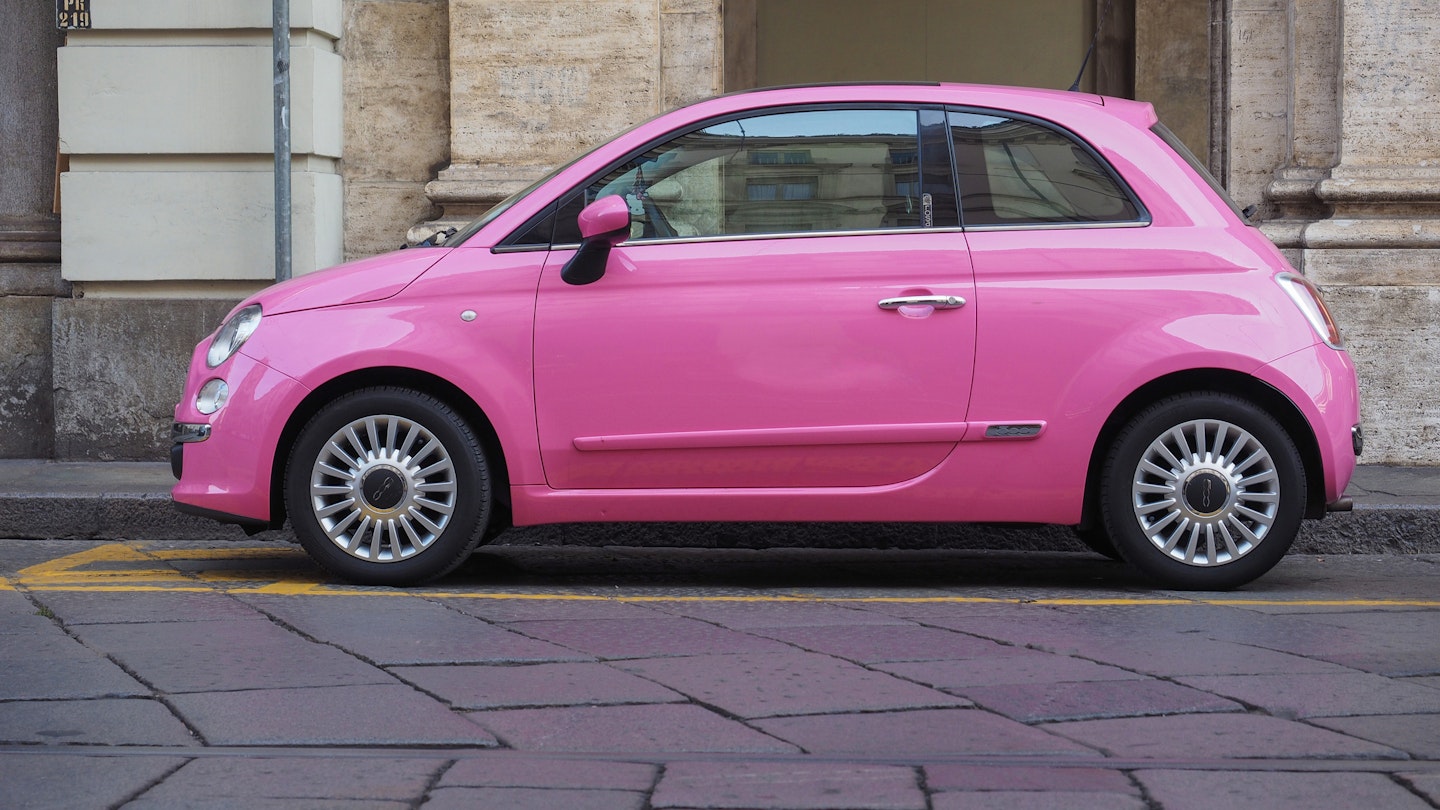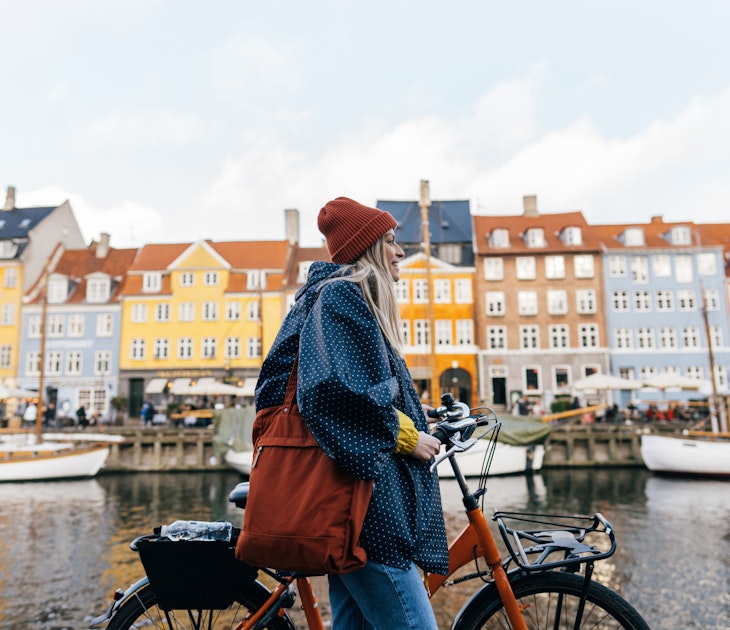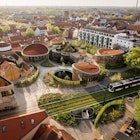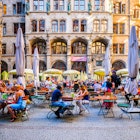As the birthplace of Fiat, Turin is one of Italy’s great car cities. But you don’t need a sporty Italian auto to get around town.
Its historic center can easily be covered on foot and there’s an excellent public transport system for reaching its various neighborhoods. To strike out on your own, two wheels are generally better than four, so grab yourself a bike and hit the cycle lanes.
See the historic sights on foot
Part and parcel of a trip to Turin is strolling its historic center. This is where you’ll find the city’s great showpiece piazzas and headline museums such as the Palazzo Reale and Museo Egizio. Distances are not huge and with some 18km (11mi) of porticoes to protect you from the elements – rain and snow in winter, the unforgiving sun in summer – you’re guaranteed a smooth passage.
To ensure maximum comfort, make sure to bring some robust walking shoes – cobblestones can be murder on the feet.

Reach outlying neighborhoods by bus or tram
To venture out of the center, your best bet is to jump on a bus or tram. The city’s public transport company, GTT, operates more than 80 lines covering every inch of the city. Services, many of which pass the main train station, Stazione Porta Nuova, generally run from around 5am to midnight.
For short hops in the center, the Star electric shuttle bus is a useful option while weekend nighthawks will appreciate the Night Buster bus service, which operates from midnight to 5am on Fridays and Saturdays. These nocturnal buses pass by popular nightspots as they run to the city’s outlying districts.
Beat the traffic, take the metro
Italy’s first fully automated metro, Turin’s subway is the fastest way of getting around town. But with only one line, it’s of limited use to visitors. Useful stops include Porta Nuova and Porta Susa, Turin’s two main train stations, and Lingotto near the Pinacoteca Giovanni e Marella Agnelli, an intimate art gallery in the former Fiat headquarters.
Public transport tickets
Public transport tickets come in various forms, all listed on the GTT website. The standard is a single ticket (less than €2), which is valid for 100 minutes on all city buses and trams and includes one metro ride. Then there are day cards (€4) and passes for 48-/72-hours (around €7.50/€10).
Once you’ve got your ticket you’ll need to validate it on board the bus or tram. To do this, simply insert it into the onboard validating machine or, if you’ve got a smart ticket, hold it up to the contactless reader.
Tickets can be bought at authorized newsstands and bars, as well as automatic vending machines. You can also get smart tickets through the free-to-download TO Move app.
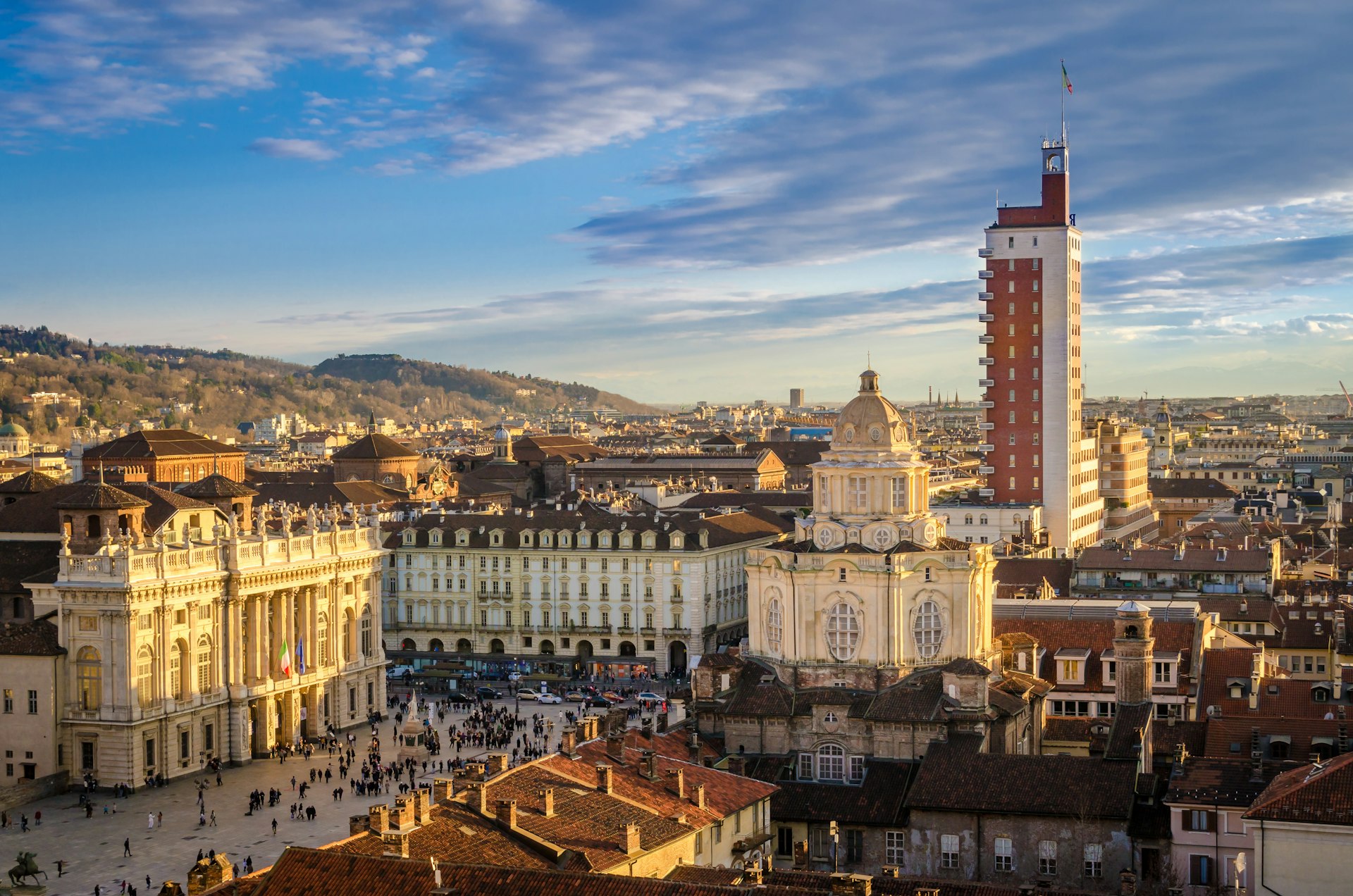
Cars are best for day trips out of town
A car is often more hassle than it’s worth in Turin. Sure, you can use an app for navigation but you’ll still have to deal with narrow streets, aggressive traffic and fierce competition for parking. There’s also the fact that the historic center is off-limits to unauthorized traffic.
The central limited traffic zone (ZTL) is active between 7.30am and 10.30am every weekday morning. Furthermore, certain central streets are limited to public transport while others are pedestrian-only. All-seeing cameras monitor ZTL entry points, so unless you have permission to enter, it pays to keep out. If you’ve booked accommodation inside the ZTL, ask your hotel or B&B for advice.
Street-side parking spaces are marked in blue and require a ticket from a meter or newsstand: expect around €1.30 to €2.50 per hour from 8am to 7.30pm Monday to Saturday. There are also several car parks dotted around the center.
Hiring a car is only really useful if you plan to head out of town or visit outlying sights such as the Reggia di Venaria Reale or Castello di Rivoli.
Take a taxi late at night
Taxis are a good bet if you’ve got luggage or need to get around late at night. But don’t try to hail one: either head to a taxi stand or call for one. Try Taxi Torino or apps such as Wetaxi or Free Now.
As a rule of thumb, always go with a metered rate. Minimum fares start at €3.50, rising to €6 at night and on Sundays and holidays. Large bags cost an extra €0.50 each.
There’s no set fare to/from the airport but the city council has imposed a maximum charge of €36. You can generally pay in cash, by credit card or increasingly through apps such as Paypal.

Pedal the streets by bike
In Turin, two wheels are often better than four. The city has around 175km (109mi) of cycle lanes and pedaling around the center is an efficient and environmentally friendly way of getting around. The city runs an excellent bike-sharing service, [TO]Bike, for which you can buy special tourist passes at the main tourist office on Piazza Castello.
With a smartphone, you can also access the free-floating Mobike network, which has hundreds of bikes across the city.
In recent years, e-scooters have started appearing on the city’s streets. There are several companies offering scooter hire, including Dott and Voi. As a rough guide, you’ll pay €1 to unlock the scooter, then €0.15 to €0.20 for every minute on the road.
Accessible travel in Turin
Turin’s historic streets can be challenging for travelers with disabilities. However, efforts have been made to improve accessibility to public transport. Many newer buses are wheelchair accessible with a designated space inside, and stops are often announced prior to arrival. Check GTT's website for a list of bus lines with wheelchair access, identified with a symbol.
Turin’s metro stations have wheelchair-accessible lifts and tactile paths for people with visual impairments.
TaxiTorino has wheelchair-accessible vehicles, though these must be booked in advance.
Why I love Turin’s trams
Sure, they’re not the quickest form of transport but Turin’s trams are such a civilized way of getting around. I love the way they glide sedately around the historic streets, their large windows offering a live stream of the city outside. They’re also greener, smoother, and generally roomier inside than their bus rivals.
You might also like:
The 5 best day trips from Turin
15 free things to do in Turin
Insider tips for the best things to do in Italy

